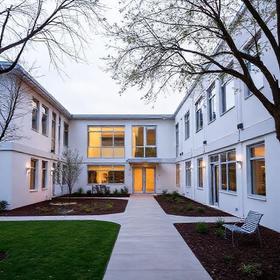Why Boarding School? A 2025 Perspective
In 2025, the decision to send a child to boarding school remains deeply personal—and increasingly strategic. While the core advantages of boarding remain consistent, evolving trends in finance, demographics, diversity, mental health, and global education are reshaping what it means to “go away to school.” Here’s a current, grounded look at why families still choose boarding school—and what they should understand before committing.
1. A Unique Learning Ecosystem
Boarding school offers more than classes; it provides a 24/7 learning environment that many day schools simply cannot replicate. Students benefit from structured evening study halls, faculty in residence, and peer collaboration outside of regular school hours. These immersive conditions often foster deeper academic engagement and more consistent intellectual growth.
In 2025, many boarding schools up their game by integrating advanced curricula—AI ethics modules, global project-based learning, and hybrid exchange programs are increasingly common. Small class sizes (frequently 6:1 or 7:1) and residential support ensure individualized attention.
2. Preparing for College — and Life
A major draw of boarding schools is how they prepare students for higher education. Beyond rigorous coursework (AP, IB, capstone research), students develop time management, accountability, and independent study habits—traits highly prized by colleges.
Living on campus also builds leadership and resilience. Dorm leadership roles, student government, mentorship, and peer dynamics contribute to emotional maturity that extends well beyond the classroom. BoardingSchoolReview noted that for many students, boarding school is not just about “better school” but “better life prep.”
3. Character, Independence & Community
Boarding school living inherently cultivates independence and character. Students manage their day-to-day routines—study, rest, chores, relationships—while navigating a community of peers with diverse backgrounds.
This isn’t just structure—it’s a support system. Residential advisors, wellness centers, and peer mentoring help students process homesickness, conflict, and emotional growth. Many boarding schools are also strengthening their mental health frameworks, embedding proactive wellness check-ins, trauma-informed training for staff, and “digital detox” periods to curb screen fatigue.
4. Diversity & Global Perspective
Boarding schools in 2025 continue to attract a globally diverse population. According to boarding school guides, many U.S. boarding schools now enroll between 15–20% international students, enriching campus life with cross-cultural perspectives.
This diversity supports deep intercultural learning: students learn to navigate different values, worldviews, and backgrounds. Boarding schools often pair this with structured exchange programs, service learning, and global citizenship initiatives.
5. Tailored Academics & Enrichment
Boarding schools often differentiate themselves by offering specialized programs that might be harder to replicate in day schools. Whether your child is passionate about STEM, the arts, entrepreneurship, or outdoor education, boarding schools provide dedicated resources: labs, conservatories, research opportunities, and seasonal or international programs.
Because students are on campus full-time, they have greater access to extracurriculars. Sports, fine arts, leadership roles, and clubs are not just after-school add-ons—they are woven into daily life.
6. Affordability & Financial Aid in 2025
While boarding school can be expensive, the landscape in 2025 reflects evolving financial aid strategies and increased transparency.
Cost range: Full boarding (seven-day) typically runs $60,000–$80,000 per year, while five-day boarding averages around $55,000, according to recent data.
Additional costs: Families should also budget for room and board, health services, technology fees, travel, and co-curricular expenses — sometimes adding $5,000–$15,000 more annually. Boarding School Review+1
Financial aid: Aid is more widespread than many assume. Approximately 34–45% of boarding students receive need-based assistance. Some schools use income-based models: for instance, Deerfield Academy limits tuition to 10% of family income for those above a certain threshold, and provides full tuition for families under $150,000.
These models reflect a growing commitment to access: top boarding schools are increasingly structuring aid to include middle-income families.
7. Continuity & Stability
For families on the move—whether for work, relocation, or travel—boarding school offers educational continuity. Rather than changing schools often, students remain in a stable, structured environment with trusted mentors, consistent peer groups, and a predictable support system.
Also, campuses often feature extensive facilities—athletics, labs, arts, outdoor programs—making it possible for students to fully pursue their interests without being limited by commuting or scheduling constraints.
8. Leadership & Lifelong Networks
Boarding school communities nurture leadership. From residential advisor roles to student government, peer mentoring, and international ambassador programs, students build experience, confidence, and responsibility.
Alumni networks of boarding schools can also be powerful. Graduates often remain deeply connected, offering mentorship, career pathways, and a global network that lasts long after graduation.
9. Challenges to Consider
Choosing boarding school is not without risk. In 2025, families must grapple with:
High cost: Even with aid, the financial commitment is substantial—and “sticker price” can be misleading without factoring in additional fees.
Emotional strain: Homesickness, family separation, and social pressure are common. Residential support structures are critical.
Well-being demands: Continuous interaction and high expectations can stress mental health. Some alumni have reported long-term impacts, prompting schools to redouble investments in counseling and wellness.
Enrollment pressures: Some institutions face declining or shifting demand. According to boarding school research, smaller or rural boarding schools may struggle to maintain enrollment and financial sustainability.
Regulatory risk and safety obligations: Residential campuses must comply with safety, liability, and regulatory issues that could impact operations and costs.
10. Is It Right for Your Family?
Boarding school is not a one-size-fits-all solution. The decision should be rooted in your child’s personality, your family’s values, and long-term goals. Here are some practical steps for assessing fit:
Visit and engage. Tour campuses (in person or virtually), meet dorm staff, and observe evening routines.
Analyze outcomes. Review matriculation statistics, college placements, and alumni stories. Boarding School Review
Compare financial scenarios. Ask for net cost calculators, aid policies, and income-based models.
Understand wellness and support. Inquire about residential staffing, mental health services, and peer mentoring.
Evaluate program alignment. Does the school offer the academic and extracurricular strengths your child needs to thrive?
Conclusion
Boarding school in 2025 remains a compelling option for families who value immersive academics, global exposure, personal growth, and long-term opportunity. The model is evolving, with greater financial accessibility, more flexible residential programs, and enhanced student wellness support. Yet, the choice demands thoughtful evaluation—financially, emotionally, and culturally.
For many, the value of boarding school lies not just in a diploma, but in the life skills, networks, and sense of independence it fosters. When selected with care, boarding school can be a powerful launchpad for adulthood.
If you’d like more data on specific boarding schools, cost comparisons, or how to narrow your list, feel free to ask or explore our BoardingSchoolReview® profiles.










